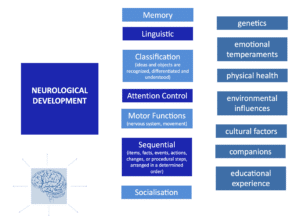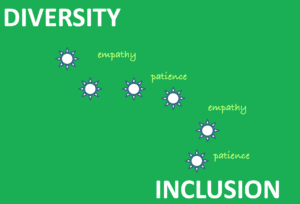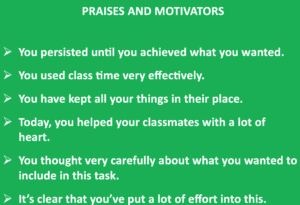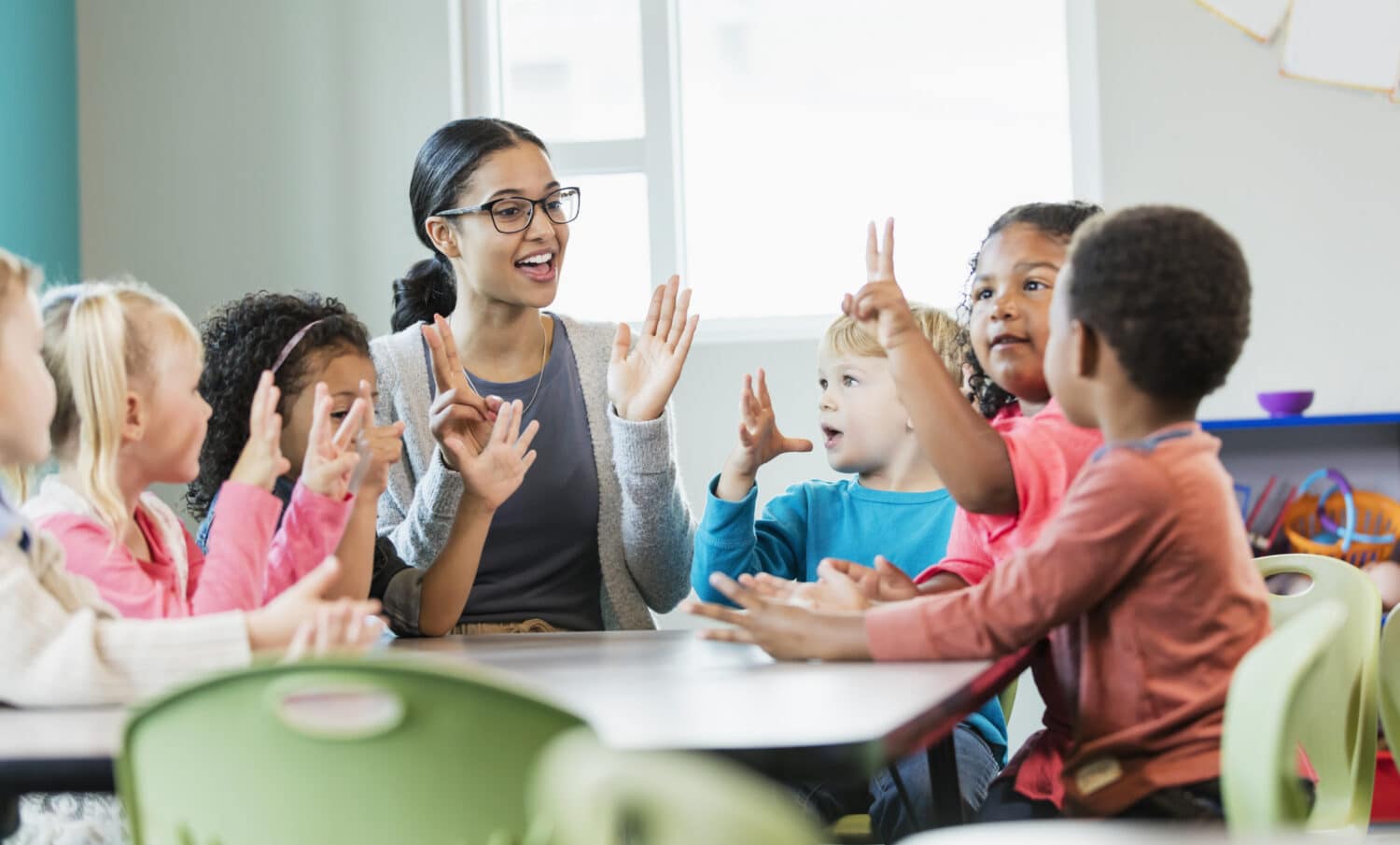DIVERSITY TO INCLUSION: Balancing diversity to reach inclusion
BY DONNA FIELDS
Welcome to RichmondShare. We’re looking forward to sharing with you the most innovative practices – methods you can use immediately in your online or your face-to-face lessons.
Diversity is about all of us…
…and about all of us having to figure out how to walk through this world together.
Jaqueline Woodson
Diversity: What types of diversity are there? How can we create a more inclusive classroom? What resources are out there that can really help us!
Excellent questions. As usual. Let’s examine them one at a time so that in the end, you’l hopefully feel more in control of the crazines that sometimes takes over your classroom.
What types of diversity are there? Well, the truth of it is that, the minute one of your students walks into the classroom, you now have diversity. You and your student probably have different learning styles, different expectations, different interests, and different speeds of assimilating information. Just being in the same space as your young learner, you are looking in the face of diversity! When the second student walks in, the diversity doubles, and so on.

But…you’re used to thinking about more blatant emotional and physical differences, right? Yes, of course. Those, too. The list you’re thinking of is probably similar to what you see below. They are the categories normally delineated on the American continents:
- Autism
- Deaf-blindness
- Deafness
- Emotional disturbance
- Hearing impairment
- Intellectual disability
- Multiple disabilities
- Orthopedic impairment
- Other health impairment (includes ADHD)
- Specific learning disabilities (includes dyslexia, dyscalculia, dysgraphia, and other learning differences)
- Speech or language impairment
- Traumatic brain injury
- Visual impairment, including blindness
However, there are so many more differences that factor into classroom diversity. In fact the INEGI (Instituto Nacional de Estadística, Geografía e Informática) divides disabilities into 9 groups and 999 subgroups; some of these subgroups have lists of hundreds of disabilities in each one!
So…there are a lot of elements that are included in educational diversity. Because of this, our main goal – as teachers and students – needs to be to find ways of creating learning environments that benefit everyone. In this way, we will all feel more confident about learning, and we’ll all become more understanding and kinder citizens of the world.
How do we do this? Well, you probably know from the other Richmond blogs, that we’re going to go right to the source – the brain – to get some grounding on what’s really going on behind diversities.
Here goes – short and sweet: The factors you see in the chart below, are the major elements that affect how the brain responds to exterior stimuli. You’ll see that neurological development is affected by both biological and societal factors…and since we all have different internal and external experiences, it’s logical that we’re going to externalize different physical and emotional responses. This means more types of diversity in our classrooms.

And there’s more. Diversity is affected by differences in:
- socioeconomics
- frequent or sudden moves (immigration, employment change or unemployment, etc.)
- language/language level
- learning style
- ethnicity/culture
- gender
- age
- sexual orientation (and acceptance of whatever it is)
- physical (height, hair color, attractiveness, cleanliness, etc.)
During the recent crisis, more elements were introduced in how students acted in the learning environment:
- physical and emotional isolation
- violence in the home
- no internet connection
- fear
- disease
- insecurity
- apathy
- frustration
As teachers, it was difficult for us to assimilate all of this at once. But there are definitely techniques we can use now, and in the future, to balance out all of these differences, and so achieve more inclusion in our student population.
Here are a few tips that address the most glaring physical problems in your physical or virtual classes.
with AUTISTIC STUDENTS:
- use eye contact to initiate and maintain interactions (in virtual classes, you’ll need parental support so that the students look at the camera and so see you looking at them)
- be clear and concise with instructions and explanations
- give warnings about upcoming transitions and changes
- give daily and weekly schedules to increase predictability
- make factual information regarding fear or anxiety arousing situations obvious (Ex. ‘This is what we know about the virus. There is no reason to believe that it can get worse.’)
- establish an area within the classroom where the student can get away from other students, when necessary (in virtual classes – the student may need to turn off the sound frequently to be able to shut out all the stimuli for a time)
with ADD/ADHD STUDENTS:
- whenever possible, let them stand and/or move around the room. They benefit from the physical movement and can usually focus better following a time of even limited exercise. (in virtual classes – encourage them to move around the room they’re in whenever they feel the need. They can turn the volume up so that they don’t miss what is happening in the class.)
- use timers, taped time signals, or verbal cues to show how much time there is remaining for an activity
- pair the student with a “study buddy”—a kind and mature classroom peer who can help give reminders or refocus the students when they gets off-track (in virtual classes – find a way to connect these students with the necessary students – either in a Breakout Room, by cell phones, or through other technology)
with DOWN SYNDROME STUDENTS:
- allow extra time for them to complete tasks
- provide increased opportunities for practice
- encourage activities that target muscle development (in virtual classes – send exercises to the parents for these students to do at home, such as fine motor development, use wrist and finger strengthening activities, and multisensory activities.)
- Place the student at the front of the class (virtual classes – mention their name more often to keep their attention)
- use gestures and expressions
- use visual aids (e.g., write on the board)
- rephrase and repeat questions or instructions often.
What we also need to do more often (and it’s completely understandable why we don’t because we’re frustrated, tired, feel isolated, we lose patience) is to give our students compliments.
We’re so used to focusing on what our diverse students do badly, or how they break the rules, break the peace in the classroom, or disrupt the class in other ways, that we forget that they do actually have moments of positive involvement.
If we only remembered to give them compliments more often, we’d also see radical changes in their interactions and self-image. Here are little motivators we can introduce whenever possible:


You’ll find a document attached with resources that can help you even further. In the end, however, what the experts say is the most important element we can use to achieve a more inclusive learning environment – and what you probably already use – is empathy and patience.
So that’s a quick introduction to different types of diversity, and ways to make our class more inclusive – either in the physical or virtual classroom. in the next blog, we’ll share concrete activities that can also help to bring about inclusion and more community. See you there soon!
In the meantime…
please share the changes you see in your learning environment as you use the techniques above to create a more inclusive classroom!!




